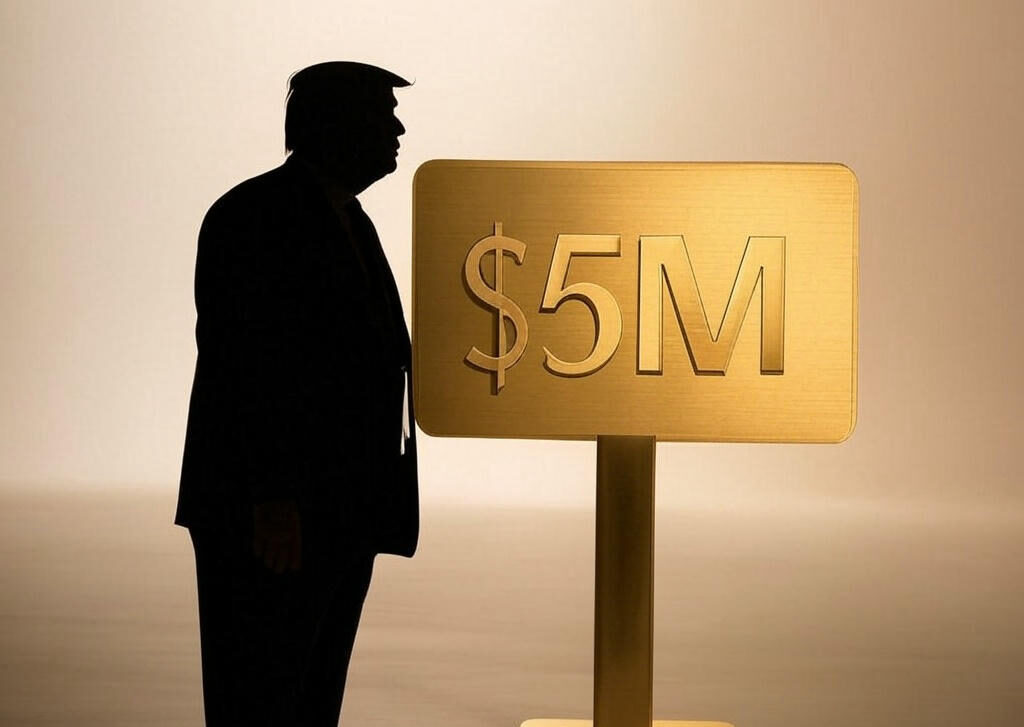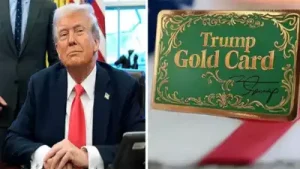Former President Donald Trump has made headlines once again with a new and controversial immigration proposal. At a recent fundraising event, Trump announced a new immigration plan centered around a “Trump Gold Card”—a program designed to grant permanent residency to wealthy foreign investors who contribute significantly to the U.S. economy.
This proposed “Trump Gold Card Visa” has stirred conversations not only about immigration policy but also about its broader implications on housing, citizenship, and the overall economic landscape. So, what is the Trump Gold Card, and why is it attracting global attention?
Trump Proposes Gold Card as Part of Immigration Reform:
During a private event attended by influential donors, Trump unveiled what is now being widely referred to as the Trump Gold Card immigration initiative. The plan allows wealthy foreigners to obtain a special visa by investing $1 million or more into the United States. Trump described it as an elite pathway to permanent residency, an alternative to existing immigration routes that can often be complicated and slow.
The Donald Trump Gold Card would function similarly to investor visas in countries like Portugal or the UAE, where high-net-worth individuals can gain residency through real estate purchases or business investments.
This proposal comes as part of Trump’s broader strategy to overhaul immigration laws, aiming to favour merit-based and investment-driven pathways.
How the Trump Gold Card Works
The Trump Gold Card would reportedly be issued to foreigners who make a minimum investment of $1 million in approved sectors like real estate, technology, or infrastructure. While full details haven’t been released, early reports suggest that the card could offer:
- A Trump Gold Card visa valid for multiple years
- A fast-track to U.S. citizenship through investment
- Access to housing and business opportunities
- Potential pathways for family members to join the primary applicant
Unlike the traditional green card process, the Trump immigration Gold Card would cater exclusively to wealthy individuals, potentially bypassing waiting periods and strict quotas.
Trump Gold Card Citizenship: A New Path for Investors
One of the most discussed features is the potential for Trump Gold Card citizenship. Under this model, qualified applicants could eventually become U.S. citizens after a set number of years living in the country, provided they maintain their investments and fulfill tax obligations.
This system echoes the Trump Gold Card investor visa approach used in other countries, where money opens the door to residency and citizenship. Critics argue that this creates an unfair system favoring the ultra-rich, while supporters claim it attracts essential capital to the U.S. economy.
Gold Card Trump Requirements: Who Qualifies?
So, what are the Gold Card Trump requirements? While official criteria haven’t been released yet, reports suggest that applicants would need to
- Prove a net worth exceeding $10 million
- Invest at least $1 million in an approved U.S. sector
- Show a clean legal and tax record
- Provide a detailed investment plan
- Commit to job creation or economic stimulation
The proposal aligns with Trump’s “America First” philosophy by ensuring the program benefits the U.S. economy directly. However, the high entry bar limits participation to an elite class of global investors.
Trump Gold Card Housing Impact: Will It Affect U.S. Real Estate?
One major concern around the Trump Gold Card housing impact is the effect on U.S. real estate prices. If the program moves forward, experts predict a surge in demand for high-end property in major markets like New York, Miami, and Los Angeles.
Some housing advocates worry this could drive up prices even further, pricing out local buyers in cities already facing housing shortages. Others believe the influx of foreign capital could boost construction and create jobs, ultimately benefiting the economy.
What Critics and Supporters Are Saying?
The reaction to the Trump proposes Gold Card plan has been mixed. Critics argue it promotes inequality by giving wealthy foreigners an express lane into the U.S., while millions of skilled workers and asylum seekers face long waits and uncertainty.
Supporters, however, view the Trump $1 million Gold Card as a pragmatic move to stimulate the economy. They argue that investment-backed immigration brings jobs, innovation, and global competitiveness.
It’s worth noting that similar visa programs already exist in the U.S., like the EB-5 Immigrant Investor Program. However, the Trump Gold Card seems aimed at streamlining and elevating the process for ultra-wealthy individuals.
What Is the Trump Gold Card Compared to Other Visa Options?
If you’re wondering what is Trump Gold Card compared to other visa options like EB-5 or E-2, the main difference lies in the financial threshold and perceived prestige. The Gold Card Trump is clearly designed to cater to a more exclusive class of investor, with a higher bar of entry and potentially more benefits.
While EB-5 requires a $800,000–$1.05 million investment, the Trump Gold Card visa sets the bar at $1 million, likely aiming to attract billionaires, business moguls, and international elites.
What Happens Next With the Trump Immigration Gold Card Plan?
As of now, the Trump Gold Card immigration proposal is just that—a proposal. For it to become law, it would need to pass through Congress or be enacted via executive order if Trump were to return to the presidency.
Political analysts believe the plan may gain traction among conservatives who favour market-driven immigration policies, especially if positioned as a tool for economic recovery and growth.
Conclusion: The Future of the Trump Gold Card
The Trump Gold Card proposal has sparked an important conversation about the future of immigration in the U.S. By offering wealthy individuals a fast track to residency and potentially citizenship, the plan breaks from traditional immigration norms.
Whether seen as an opportunity or a loophole, the Trump Gold Card reflects the ongoing debate about who gets to call America home—and at what cost. As this proposal develops, it will be crucial to assess its real-world impact on immigration fairness, housing markets, and the U.S. economy at large.




